Bodywork Masking

Masking car bodywork
-
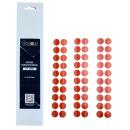 CRR60Parking sensor masking discsPack of 60
CRR60Parking sensor masking discsPack of 60 -
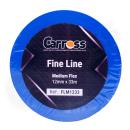 FLM1233Fine line Medium flex12mm x 33m - blue
FLM1233Fine line Medium flex12mm x 33m - blue -
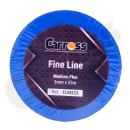 FLM333Fine line Medium flex3mm x 33m - blue
FLM333Fine line Medium flex3mm x 33m - blue -
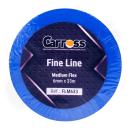 FLM633Fine line Medium flex6mm x 33m - blue
FLM633Fine line Medium flex6mm x 33m - blue -
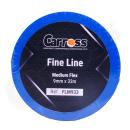 FLM933Fine line Medium flex9mm x 33m - blue
FLM933Fine line Medium flex9mm x 33m - blue -
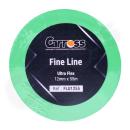 FLU1255Fine Line Ultra Flex12mm x 55m - green
FLU1255Fine Line Ultra Flex12mm x 55m - green -
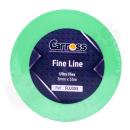 FLU355Fine Line Ultra Flex3mm x 55m - green
FLU355Fine Line Ultra Flex3mm x 55m - green -
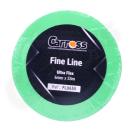 FLU655Fine Line Ultra Flex6mm x 55m - green
FLU655Fine Line Ultra Flex6mm x 55m - green -
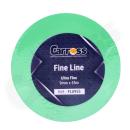 FLU955Fine Line Ultra Flex9mm x 55m - green
FLU955Fine Line Ultra Flex9mm x 55m - green -
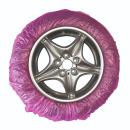 FMP20Tyre Masking Filmfor rim paint - box of 20
FMP20Tyre Masking Filmfor rim paint - box of 20 -
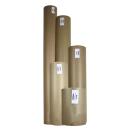 KRAFTPREMIUMKraft premium40g/m2 - 400m
KRAFTPREMIUMKraft premium40g/m2 - 400m -
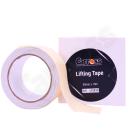 LT5010Joint protection tape50mm x 10m
LT5010Joint protection tape50mm x 10m -
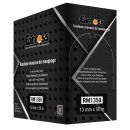 RM1350Foam masking tape13mm x 50m
RM1350Foam masking tape13mm x 50m -
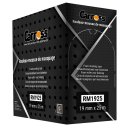 RM1925Foam masking tape19mm x 50m
RM1925Foam masking tape19mm x 50m -
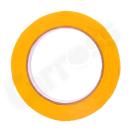 RMF1850Finishing Masking tape18mm x 50m - Extra thin
RMF1850Finishing Masking tape18mm x 50m - Extra thin
︾
What is bodywork masking?
The term "body masking" is generally used in the field of car paintwork. The process of body masking involves covering or protecting certain parts of a vehicle before it is painted. This is done using special adhesive tapes, paper, plastic or other protective materials.
The main purpose of body masking is to prevent paint from touching or damaging areas of the vehicle that are not to be painted. For example, windows, headlights, door handles, mirrors and other parts must be carefully protected during the painting process to avoid unnecessary damage.
The masking process requires great precision and attention to detail, as it is essential to obtain clean, sharp lines between the areas to be painted and those to be protected. Once masking is complete, the paint can be applied to the unprotected parts of the vehicle. This process is commonly used in bodyshops and car paint shops to ensure a quality job.
What are the advantages of masking in bodywork?
Masking is an essential part of the bodybuilder's or painter's trail. It consists of protecting certain areas of a vehicle (car, motorbike, HGV) during the application of a coating such as Paint, Clearcoat or Putty. Made from Vinyl Tape, paper or a special film, it guarantees clean, precise work that conforms to original standards. Here's a summary of the advantages of masking for bodywork in car workshops:
1. Optimum surface protection:
Masking prevents paint, Clearcoat or Degreaser from settling on areas that should not be. As a result, windows, seals, plastics and mechanical parts remain intact. The result: a time-saving, professional finish with no unnecessary Touch up.
2. A clean, attractive finish:
Thanks to careful masking, the parting lines are clean, without burrs or drips. The result is harmonious bodywork, whether you're doing a local repair, touching up scratches or a full paint job.
3. Save time and improve efficiency:
By reducing the risk of mistakes and unwanted splashes, Masking makes car paint application quicker. The bodybuilder works with confidence and gains in productivity, which is essential in a workshop where every minute counts.
4. Better product management:
Masking reduces the consumption of paint, primer or putty, because only the essential part of the surface is treated. This reduces the weight of product applied and improves overall yield.
5. An ally for all types of work:
Whether it's for a pure white tint, a metallic paint or a high-gloss Clearcoat, Masking is included in every stage of a repair. It can be adapted to any situation: Spot-repairs, work on individual parts or complete bodywork, cars or HGVs.
Masking is used to protect the bodywork during paint work, giving a perfect finish and impeccable area protection. It ensures perfect adhesion to the areas to be painted, protects the rest of the vehicle, optimises the use of products and gives a professional, long-lasting finish.
How can I avoid masking marks?
Masking is an essential stage in bodywork and car or motorbike painting. Done correctly, it protects areas that should not be painted, primed or Clearcoated. But if the technique is poorly applied, marks can appear: visible demarcations, smudges or differences in finish. So how can you avoid this and achieve a perfectly clean finish using a good masking technique?
1. Prepare the surface correctly:
Preparation of the surface is essential. You need to :
- Clean the area with a suitable product to remove dust, grease or residues.
- Lightly sand to improve paint adhesion
- Make sure the surface is completely dry
Good preparation considerably reduces the risk of leaving marks after the tape has been removed.
2. Use the right masking material :
The choice of tape and protectors is crucial:
- Use professional quality tape that is heat resistant and easy to remove
- Use paper or film suited to the size of the areas to be protected
- Avoid cheap products that leave sticky residues or warp under the paint.
3. Apply the tape correctly:
For a clean result:
- Apply the tape to a clean, smooth surface
- Avoid overlapping several coats
- Don't press too hard, so as not to create marks when removing.
Correct application will produce a precise, uniform parting line.
4. Remove the tape at the right time :
The timing of removal is essential
- Not too early, to avoid smudging
- Not too late, when the paint is completely dry and could peel off.
The best time to remove the tape is when the paint is still slightly soft, for a clean, neat cut.
5. Check and correct if necessary:
If a slight demarcation remains :
- A thin layer of Clearcoat can even out the area
- A light Polishing can correct the defects
- A discreet airbrush touch up is possible for a perfect finish.
To avoid masking marks, there are three essential points to remember: prepare the surface properly, use the right equipment and remove the tape at the right time. By following these steps, the result is clean, even and professional, whether you're doing a local repair or a complete paint job.
How do I choose Masking tape?
This consumable helps you achieve clean lines, avoid smears and save time when applying the coating. But with so many tapes available on the market, how do you make the right choice?
1. Consider the surface area of the bodywork to be protected:
The first criterion for choosing a Masking tape is the nature of the surface:
- Smooth surface: classic tape with standard adhesion is sufficient
- Irregular or textured surface: choose a more flexible tape that adapts to the contours of the surface
- Delicate surfaces or surfaces that have already been painted: choose a low-tack tape to avoid tearing off the existing paint during removal.
2. Check resistance to heat and painting time:
Some paints require hot drying or oven treatment. In this case, the tape must :
- Withstand high temperatures without peeling off
- Not leave sticky residues after removal
- Retain its shape even after prolonged application.
3 Choosing the right width :
The width of the tape depends on the area to be protected:
- Narrow tape for details or fine edges
- Wide tape to protect large surfaces such as windows or rocker panels.
The right width ensures precise masking while reducing the risk of smudges.
4. Opt for professional quality tape:
Low-end masking tapes can :
- Peel off too easily
- Leave adhesive residues
- Tear when removed
A professional tape ensures optimum adhesion, easy removal and a clean result, essential for a clean, even finish.
5. Take into account the intended application:
- For metallic paint, a flexible, precise tape is recommended to avoid visible demarcations.
- For quick or one-off jobs, a standard tape may be sufficient
- For repetitive work in a workshop, investing in durable quality tape is more cost-effective in the long term
Choosing the right bodywork masking tape depends on a number of criteria: surface type and sensitivity, heat resistance, appropriate width and professional quality. Careful selection ensures clean masking, protects unaffected areas and guarantees an even, professional paint finish.
How do I apply masking film?
Masking film is an essential tool for protecting parts of a vehicle that are not to be painted, such as windows, tyres, mirrors, seals or bodywork components not involved in the repair. Easy to use, it offers fast, economical and professional protection. But to guarantee impeccable results, it must be applied correctly. Here are the essential steps for applying masking film correctly.
1. Prepare the surface to be protected :
Before any application, it is essential to :
- Clean the area with a suitable product (Degreaser or bodywork cleaner).
- Dry the surface so that the film adheres properly
- Remove any dust and impurities that may be deposited under the film.
Good preparation guarantees optimum protection and prevents paint from smudging.
2. Choosing the right masking film :
There are different types of film, adapted to the needs of the bodybuilder or private individual:
- Standard films for large surfaces
- Electrostatic films that adhere without glue, practical for windows and windscreens
- Perforated films for easy cutting around complete areas
The choice depends on the surface to be protected and the level of precision required.
3. Unroll and position the film :
- Cut a sufficient length of film to cover the area
- Unroll gently to avoid creases
- Apply the film evenly over the surface to be protected
Working in pairs makes it easier to apply to large areas such as the bonnet, roof or side windows.
4. Secure the film with Masking tape :
To prevent the film from moving or lifting during painting
- Stick professional Masking tape around the edges.
- Smooth out the bodywork Masking tape to prevent paint seepage
- Check that sensitive areas (corners, edges, joints) are watertight.
5. Remove the film at the right time :
Once the Paint has been applied and before it is completely dry:
- Remove the tape and then the film gently
- Avoid sudden movements to avoid creating burrs
- Check the finish immediately and correct if necessary
Applying masking film is a simple but essential step for a clean, professional paint job. If you follow the right steps: preparing the surface, choosing the right film, fixing it properly and removing it at the right time, the result will be clean, with no unwanted splatter, and the bodywork will look impeccable.
A good masking film, combined with quality masking tape, saves time, protects effectively and gives a professional finish.
To sum up, bodywork masking is an essential step in car repairs, protecting areas that should not be painted. Whether it's a door, a wing or a bumper, using a quality adhesive sheet guarantees optimum protection and perfect adhesion.
These films and tapes are often sold in rolls or in formats adapted to each dimension, making them practical for all operations, from Sanding to Paint. Thanks to the marouflage process, the product adapts perfectly to the shape of the bodywork, ensuring a clean transition between the painted and protected areas. This process is particularly suitable for obtaining a regular, professional parting line.
Designed for use in paint booths, these products are resistant to temperature variations, water and solvent sprays, while remaining easy to apply and fix. They form part of a complete surface preparation system, from the base to the finish, guaranteeing professional results.
Available throughout France, these masking films and tapes are the ideal tool for bodybuilders looking to achieve an impeccable, long-lasting finish that complies with professional standards. Don't hesitate to contact our sales department for more advice.
What are the different consumables for bodywork masking?
Masking tape:
This is an adhesive tape specially designed for bodywork masking. It is often made with a pressure-sensitive adhesive that allows easy application and strong adhesion. This tape is used to outline areas to be painted, creating clean, precise lines.
Masking film :
Masking film is usually made of transparent or translucent Plastic. It is used to cover larger areas or to protect an entire surface. The film provides a physical barrier to paint and is often used to mask off large areas of the vehicle.
Kraft paper :
Kraft paper is used in masking to cover large areas. It is strong and offers protection against paint splashes. Kraft paper is often preferred for masking larger areas because of its ease of handling.
Masking foam tape :
These rollers are often used to apply paint, but can also be used in the Masking process. They allow protective products, such as primers or sealers, to be applied evenly to the surfaces to be masked.
Masking tape :
Masking nets are flexible strips often used to mask curved or irregular contours. They can be shaped to fit different shapes, providing a barrier against paint while following the lines of the vehicle.
Foam masking tape:
This type of tape combines the adhesive properties of Masking tape with a foam surface. It is often used to create watertight joints, providing extra protection against paint seepage.
Joint protection tape :
This tape is specially designed to mask joints and gaps between different parts of the vehicle, such as door seals. It prevents paint from seeping into these areas, ensuring a clean finish.
The correct use of these products in body masking is essential to ensure quality paintwork and professional results. Each product has its own specific benefits depending on the needs of the paint job and the contours of the vehicle.
Questions related to body masking :
When it comes to body masking, users often ask a number of questions to ensure high quality paint results. Here are some of the questions most frequently asked by users:
1. What type of Masking tape should I use?
Users want to know what type of Masking tape is best for their project. Options include standard masking tapes, delicate masking tapes for sensitive surfaces, and masking tapes with special properties, such as those with built-in foam.
2. How can I avoid paint smudges under masking tape?
This question often concerns the technique for applying the tape to minimise the risk of paint seeping under the tape. Advice on surface preparation and careful application of the tape is usually requested.
3. When should I remove Masking tape?
Users want to know exactly when to remove the tape to get the best results. This often depends on the type of Paint used and the manufacturer's recommendations.
4. Is masking tape reusable?
Some users wonder whether masking film can be reused for other paint projects. The answer often depends on the quality of the film and how it was handled when first used.
5. How do I mask complex or curved areas?
This question is frequently asked by those working on vehicles with complex contours. Users are looking for advice on the use of masking tapes, flexible tapes or other techniques to adapt to irregular shapes.
6. Should I use kraft paper or masking film for large surfaces?
Users are trying to decide which material is best suited to masking large areas. This often depends on ease of application and the need to protect the surface from paint splashes.
7. How do I protect joints and gaps during masking?
Some users are concerned about how to mask delicate areas such as door seals. They ask about the use of special protective tape to prevent paint seepage.
Answering these questions and following good bodywork masking practice will help ensure a flawless, professional paint job.
Our top brands of bodywork masking consumables:
On the Carross website, we offer a wide range of brands of bodywork consumables to help you carry out your bodywork masking:
The 3M brand of bodywork masking consumables:
Masking tapes: 3M is well known for its high-quality masking tapes, which offer excellent adhesion and resistance to paint.
Masking films: 3M offers tough, clear masking films that provide protection against paint splatter.
Joint protection products: The 3M range includes tapes specially designed to protect joints and gaps during the Masking process.
The Carross brand of bodywork masking consumables:
Masking tapes: Carross offers a variety of masking tapes adapted to different needs, from standard tapes to more delicate tapes for sensitive surfaces.
Masking films: Carross also offers masking films for the protection of larger surfaces.
Masking accessories: The Carross range can also include other accessories such as masking nets, masking rolls, and seam protection tapes.
The 4CR bodywork masking brand:
Masking tapes: 4CR offers masking tapes suitable for different applications, often with good Paint resistance.
Joint protection products: Some 4CR products can be dedicated to protecting joints and sensitive areas during masking.
Various accessories: The 4CR range can also include other consumables related to bodywork masking, such as masking nets and protection rolls.